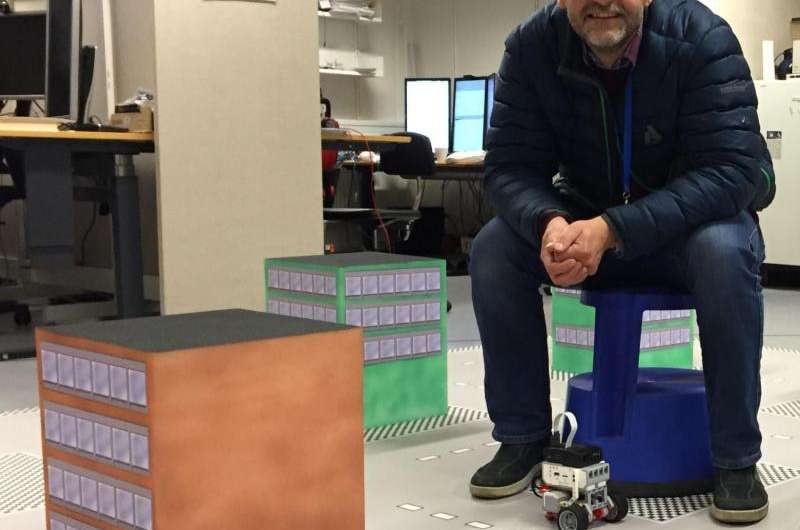30-lane data highway in sight

The amount of data transferred over mobile networks is soaring. In five to seven years, the bandwidth and speed of the new 5G networks will be up to 200 times faster than today – so fast that the notion of speed loses its meaning, says Professor Preben Mogensen of the Department of Electronic Systems at Aalborg University.
"If you imagine that the mobile broadband we use now is an ordinary highway with two lanes in each direction, then the 5G technology that we expect to be implemented around 2020 is 30 lanes in each direction," explains Professor Preben Mogensen.
Researchers and professionals from around the world are currently trying to agree on which frequency bands the new bandwidths must use – something that so far has failed.
Frequency band mishmash
As the need for greater mobile bandwidth increases, there is a need to expand the number of frequency bands you can use to transmit data.
Basically, with low frequency bands you can cover a very large area with small bandwidth, while the higher the frequency, the greater the possibility of increasing bandwidth. But unfortunately coverage also deteriorates so more transmitters must be set up in order for users to fully enjoy the fast network.
At the same time, it is difficult to achieve an international consensus on the allocation of new frequency bands for 5G technology because the various countries already use the radio frequencies for satellite communications, radar control, or any other important communications that must not be interrupted.
For example, mobile phones in Europe, Asia and the US use different frequency bands, but because phones need to be sold on the global market, most smartphones cover a very wide range of frequencies.
Not more users, but more data
"When you look at the world's population, soon all of us will have a mobile phone, so it's not that the increase in human users is particularly fast," explains Preben Mogensen. "On the other hand, each of us uses more and more data. Just five years ago, we mostly used phones to talk, but today we are online constantly with streaming services, Facebook, email, and whatever other applications we use that run all the time. Our data consumption roughly increases by about 30 percent a year and it will increase tenfold during each decade."
Consumption also increases because telephone cameras work with higher resolution, screens are better and more data is crammed onto ordinary websites where photos, advertisements and video clips take up most web media.
"The text we want to read on a page probably takes up just a few bytes, but it's everything around it that takes up space. So even though we may not feel that we're using more data, our need for data increases all the time," explains Preben Mogensen.
Talking machines
In addition to the way we use the Internet, the need to expand bandwidth is also due to the fact that our machines increasingly use the web to talk to each other.
The phenomenon is called the "Internet of Things" and basically means that more and more of the technological devices we surround ourselves with are transmitting data to each other all the time.
A simple example is that you can already read your power consumption on the web today because the electricity meter is online and is continuously telling you how much power is being used in your house. Soon the electricity meter will even be able to check the current prices of power and wait to turn on the dishwasher until the middle of the night when the price is lowest. This type of data exchange that doesn't necessarily involve people will rise exponentially in the coming years, believes Preben Mogensen.
"In the future we expect that the number of machines on the web will be about 10 times greater than the number of people," he says.
So fast that speed is irrelevant
When the new 5G bandwidths become operational in five to seven years, the rate of mobile broadband data will reach about 20 gigabits per second compared to the 100 megabits normally possible on the current 4G network. In other words, the web will be 200 times faster than it is today. This means that you can download the equivalent of an entire feature film in full HD quality in seconds. With the bandwidth and the speeds, transfers will be so fast that the question of speed really becomes irrelevant.
"You can compare it to the automotive industry, he says. - If development were to have continued in the same way as it did up until 10 years ago, we would now produce cars that go over 400 kilometers per hour, but that makes no sense. Instead, development proceeded in the direction of more safety, more comfort, far more advanced electronics and better environmental performance. I think we will see the same in communication technology, that it's no longer the speed and range of data that's so important. If that's the case, you can imagine that we will instead focus on lower power consumption, longer battery life and more advanced applications," says Preben Mogensen.
"It may be that we're all going to be walking around with virtual reality glasses on. It's hard to predict," he said. "We're generally good at predicting what technology can do in ten years, but not necessarily how people will accept it and use it."
Provided by Aalborg University




















